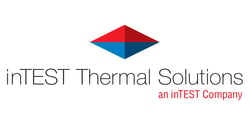A 4-Step Checklist to Safely Store Vaccines

Immunization is one of the biggest cost-effective public health interventions to date. WHO estimates that nearly 2 to 3 million deaths are prevented each year through immunizations against diphtheria, tetanus, and pertussis vaccine (DTP).
What’s more, the estimated global demand for vaccines totaled 3.5 billion doses in 2018. And now, with the multibillion-dollar race for a COVID-19 vaccine, the global supply and demand for vaccines have become even greater.
The effectiveness of vaccines relies on their potency; they should be at full strength to trigger an adequate immune response. Unfortunately, providers every year endure serious financial losses due to vaccine storage errors.
Maintaining a precise temperature-controlled cold chain is an effective way of ensuring vaccine potency. So how do you safely store and handle your vaccine supply? Here’s a comprehensive checklist based on CDC’s recommendations:
1. Establish vaccine storage and handling standard operating procedures
- Facilities should develop detailed, clear, and up-to-date SOPs for the staff that specify proper procedures of identifying, correcting, and reporting problems. Organizations also need to layout emergency plans for equipment failures, power outages, emergency vaccine retrieval, and natural disasters.
- Maintain up-to-date contact information for equipment service providers, vaccine manufacturers, and essential staff.
- Organizations must maintain written policies for routine storage and handling SOPs for vaccine inventory management, including properly monitoring storage conditions using digital data loggers.
2. Designate Primary and Back‐up Vaccine Coordinators
Designate primary vaccine coordinator and a back-up coordinator, and ensure that they review the Vaccine Management Plan Binder and the training materials offered by the state or local health department’s immunization program.
The coordinators should oversee the storage and handling of the vaccine inventory and manage it in each other’s absence. Both should be aware of how to execute emergency and routine SOPs.
3. Training staff to handle vaccine deliveries
You need staff members who have undergone proper training and are aware of the facility’s SOPs. CDC recommends that the organization must have all training sessions documented along with participant names and dates.
Designated staff members should undergo training periodically when:
- The facility adds vaccines to the inventory
- A federal agency or manufacturer updates the vaccine handling and storage recommendations
- An annual refresher training is conducted for the staff handling vaccine storage and immunizations
- New employee orientation is conducted
4. Use Proper Storage Equipment
Facilities must store vaccines in pharmaceutical-grade, purpose-built biomedical refrigerators, and lab freezers. The cold chain solutions should have microprocessor-based temperature controls with digital temperature sensors for precise temperature management.
Here are some guidelines:
- Do not use dormitory-style units (combination refrigerator and freezer units) because they are unable to maintain consistent temperatures necessary for ensuring vaccine potency. Instead, buy stand-alone lab refrigerators and freezers
- Make sure the storage unit offers a backup solution in the event of a power failure
- Ensure the unit has visual and audible alarms for out-of-range temperatures and relies on forced-air circulation to maintain chamber uniformity
North Sciences offers a great selection of medical-grade refrigerators and freezers that comply with CDC and FDA recommendations of vaccine storage and handling and protect the vaccines’ potency.
Buy lab refrigerators, bio freezers and ULT freezers with Twin Technology online today!
